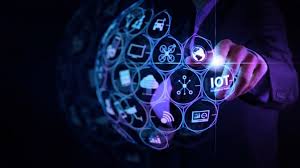
The Internet of Things (IoT) has been revolutionizing various industries, and eLearning is no exception. The infusion of IoT in eLearning is transforming the educational landscape, creating more dynamic, interactive, and personalized learning experiences. Here are six ways the internet of things is changing eLearning:
1. Personalized Learning Environments: IoT devices gather data on how individual students learn, what their strengths and weaknesses are, and what pace they prefer. This information can tailor the eLearning content to fit each student’s needs, offering a highly personalized learning experience.
2. Enhanced Engagement through Wearables: Wearable IoT devices such as smartwatches and fitness trackers can provide learners with notifications, reminders, and encouragement to stay engaged with their eLearning materials. Furthermore, they can track students’ attention and engagement levels during study sessions.
3. Real-Time Feedback and Support: Sensors embedded in educational tools or environments can provide immediate feedback to learners. For example, a smart pen can analyze writing skills and offer suggestions for improvement, making the learning process more interactive.
4. Improved Accessibility: The IoT can assist those with disabilities by integrating technologies such as voice recognition, text-to-speech converters, and automatic translators into eLearning platforms. These tools help break down barriers that might prevent some students from accessing education.
5. Immersive Learning with Augmented Reality (AR) and Virtual Reality (VR): By incorporating AR and VR technologies, IoT makes learning immersive. Students can explore virtual environments or augment their real-world surroundings with additional educational content.
6. Efficiency in Learning Management: IoT aids in the collection of comprehensive data regarding course effectiveness, student performance, and resource utilization. This can streamline administrative tasks for educators while also enabling them to refine curriculum based on empirical evidence.
These advancements herald a significant shift towards a more efficient, engaging, and inclusive educational system powered by technology-driven solutions where the barriers of traditional learning are continually being broken down.
